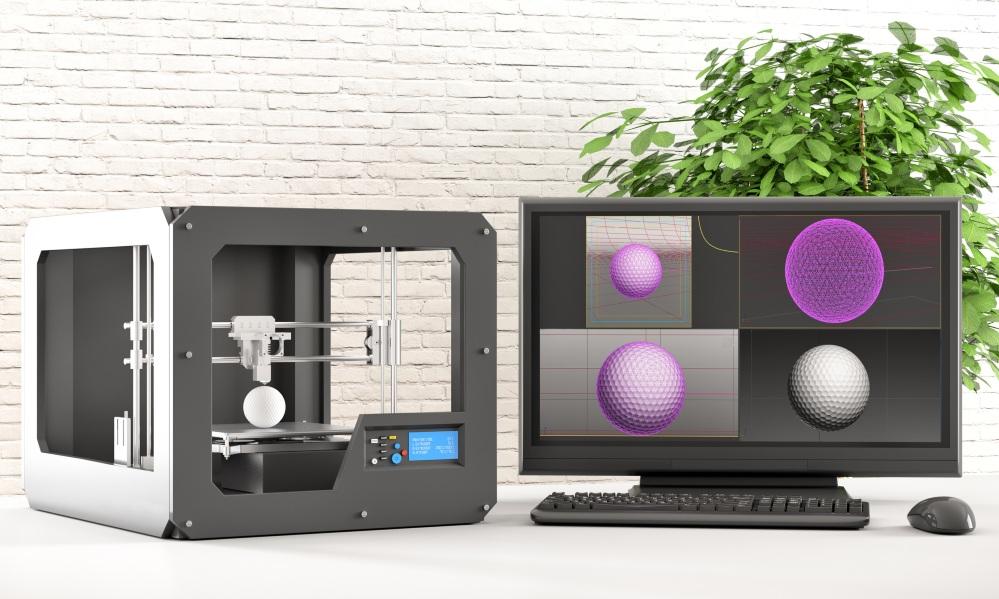- FMA
- The Fabricator
- FABTECH
- Canadian Metalworking
Our Publications
Categories
- Additive Manufacturing
- Aluminum Welding
- Arc Welding
- Assembly and Joining
- Automation and Robotics
- Bending and Forming
- Consumables
- Cutting and Weld Prep
- Electric Vehicles
- En Español
- Finishing
- Hydroforming
- Laser Cutting
- Laser Welding
- Machining
- Manufacturing Software
- Materials Handling
- Metals/Materials
- Oxyfuel Cutting
- Plasma Cutting
- Power Tools
- Punching and Other Holemaking
- Roll Forming
- Safety
- Sawing
- Shearing
- Shop Management
- Testing and Measuring
- Tube and Pipe Fabrication
- Tube and Pipe Production
- Waterjet Cutting
Industry Directory
Webcasts
Podcasts
FAB 40
Advertise
Subscribe
Account Login
Search
The world of 3D printing keeps on rolling
Unlike some manufacturing technologies, it’s never the ‘same old story’ with additive manufacturing
- By Kip Hanson
- UPDATED August 15, 2021
- August 13, 2021
The great, not-so-late REO Speedwagon released “Roll with the Changes” during my late teens. The song has become especially meaningful over the past year or so, not only as it relates to the pandemic, politics, and the planet, but to 3D printing as well.
I consider myself fairly well-versed in additive manufacturing, but to quote one of the famous bands of my youth, the 3D printing industry continues to “turn some pages.”
This hit home for me recently while researching my latest favorite AM topic: refractory metals, which I recently wrote a blog about it.
It seems that Germany’s Fraunhofer Institute for Manufacturing Technology and Advanced Materials has developed a new process—3D Screen Printing—that falls outside of the seven types of additive manufacturing defined by the ASTM Committee F42 standards.
It was pretty cool reading about a novel AM technology, but as it turns out, it’s not all that novel. Fraunhofer introduced it in 2016, and for whatever reason, no one has yet commercialized it (at least not that I’ve heard about. Feel free to correct me).
Because the editor of The Additive Report is a fan of all things additive, it’s entirely likely that you’ll read more about 3D Screen Printing in a future edition. For now, the Fraunhofer website explains that it uses a printable suspension of metal powder and organic binder, which is pressed through a series of computer-generated masks. There’s a hardening step between each layer, followed by heat treatment of the finished part to remove the binder and sinter the metal powder.
Except for the hardening and heat treatment steps, it sounds much like the screen printing used to make the T-shirts found at REO Speedwagon concerts. (Sidebar: I just discovered that the quinquagenarian group is on tour and playing at an arena near me in November. Maybe I’ll attend.)
As an old machinist and even older rock fan, my point is simple: New CNC machine tool designs come along every year or two, but their basic function remains the same as it has for decades—sometimes centuries.
With 3D printing, however, there’s never a same old story. There’s a constant stream of new-and-better-way-to-print-things technologies being introduced. So many, in fact, it’s hard to keep track of them all.
Rock on, additive.
About the Author

Kip Hanson
About the Publication
- Podcasting
- Podcast:
- The Fabricator Podcast
- Published:
- 04/16/2024
- Running Time:
- 63:29
In this episode of The Fabricator Podcast, Caleb Chamberlain, co-founder and CEO of OSH Cut, discusses his company’s...
- Trending Articles
- Industry Events
16th Annual Safety Conference
- April 30 - May 1, 2024
- Elgin,
Pipe and Tube Conference
- May 21 - 22, 2024
- Omaha, NE
World-Class Roll Forming Workshop
- June 5 - 6, 2024
- Louisville, KY
Advanced Laser Application Workshop
- June 25 - 27, 2024
- Novi, MI



























